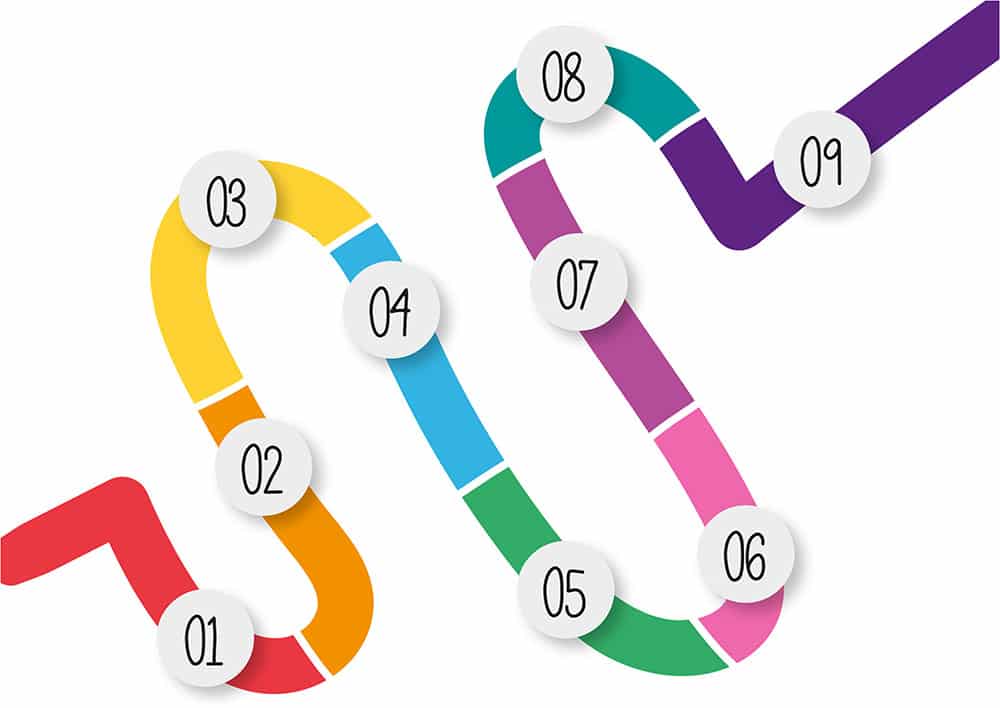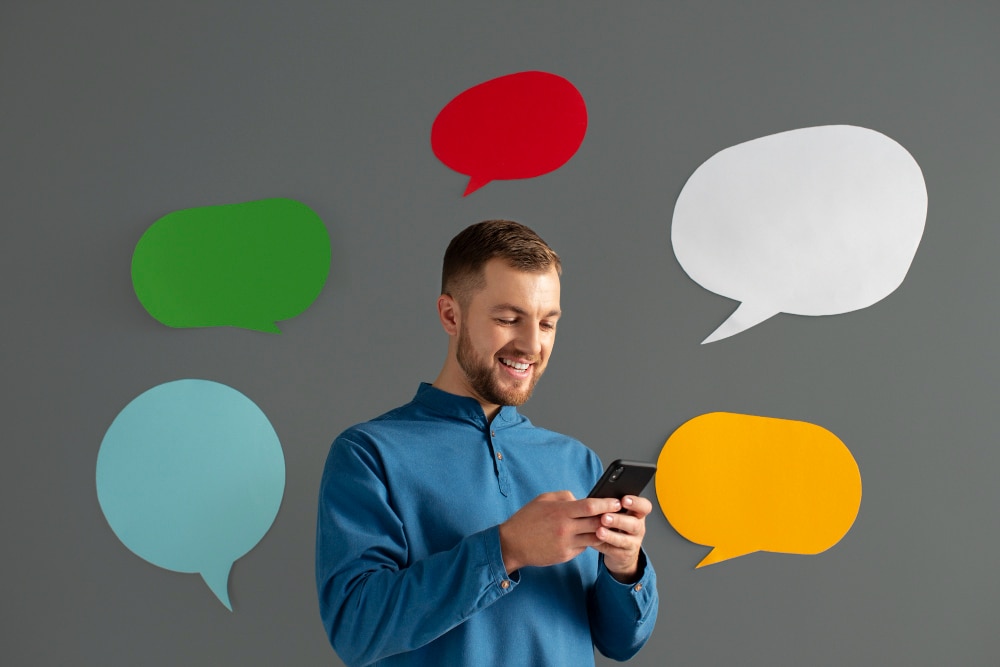Table of Contents
- 1 Benefits of Texting Over Other Channels
- 2 9 Effective Text Messaging Strategies
- 2.1 1. Ensure Timely Payments
- 2.2 2. Proactively Follow Up with Sales Prospects
- 2.3 3. Enhance Website Lead Capture
- 2.4 4. Re-engage Customers with Promotions
- 2.5 5. Deliver Exceptional Customer Service
- 2.6 6. Increase Customer Reviews
- 2.7 7. Streamline Appointment Scheduling
- 2.8 8. Broadcast Urgent Updates
- 2.9 9. Emergency Alerts
- 3 Getting Started with Emergency Text Alerts
- 4 Maintaining Compliance and Respect for Privacy
- 5 Leveraging Technology and Automation
- 6 Regularly Updating and Refreshing Content
- 7 Training and Empowering Your Team
- 8 Optimizing Timing and Frequency
- 9 Creating Compelling Content
- 10 Measuring Success and Making Adjustments
- 11 Ensuring Security and Privacy
- 12 Integrating Multichannel Strategies
- 13 Final Verdict!
In today’s digitally-driven marketplace, businesses are constantly seeking innovative ways to engage with customers and drive growth. One increasingly popular strategy is leveraging the power of texting to establish direct and meaningful connections with their audience. In this article, we’ll explore 9 ways businesses succeed by texting customers, highlighting the myriad benefits and strategies that businesses can employ to harness the full potential of text messaging as a communication tool.
Navigating the noisy landscape of customer communications is tricky, but effectively connecting with your audience is rewarding. Customers genuinely appreciate engaging content, especially when it offers real value.
As a seasoned marketing VP for Text Request, my experience with many small businesses has solidified my belief in the power of tasteful text messaging. It’s an effective tool that can streamline customer engagement processes, making operations smoother for your team and enhancing the customer experience.
Benefits of Texting Over Other Channels
In the realm of modern business communication, texting has emerged as a powerful tool with unparalleled immediacy and directness. Businesses are increasingly turning to texting over other channels to engage with customers more effectively. So before we explore the 9 ways businesses succeed by texting customers, we’ll explore the key benefits of texting over other communication channels, emphasizing its immediacy, high open rates, and direct access to customers’ attention.
- Immediacy: Unlike emails or traditional mail, texts are typically read within minutes of being received, making them an ideal channel for time-sensitive communications such as appointment reminders or flash sales alerts.
- High Open Rates: Text messages boast exceptionally high open rates, with studies indicating that over 90% of text messages are opened within the first few minutes of receipt. This ensures businesses can reliably reach their intended audience and effectively deliver important messages.
- Direct Access to Customers’ Attention: With the prevalence of mobile devices, individuals are almost always within arm’s reach of their phones. Texting gives businesses a direct line to customers’ attention, bypassing the clutter of email inboxes or social media feeds.
- Personalized Engagement: Texting allows for personalized and conversational interactions between businesses and customers. With features like two-way messaging and automated responses, businesses can provide tailored support and address customer inquiries promptly.
- Cost-Effectiveness: Compared to traditional marketing channels like print or television advertising, texting is a cost-effective means of reaching a large audience. With low per-message costs and high engagement rates, businesses can achieve significant returns on their investment in texting campaigns.
- Optimized for Mobile: As mobile usage continues to rise, businesses must adapt their communication strategies to meet customers where they are. Texting is inherently mobile-friendly, with concise, easily digestible messages on smartphones, making it an ideal channel for reaching on-the-go consumers.
- Compliance and Consent: Unlike email marketing, which requires strict adherence to regulations like GDPR, texting is subject to less stringent rules regarding consent and opt-ins. This makes it easier for businesses to build and maintain subscriber lists while ensuring compliance with applicable laws.

9 Effective Text Messaging Strategies
Customers are receptive to text interactions, provided these communications are valuable. Here are 9 effective text messaging strategies to make your businesses succeed and maximize the impact of texting customers within the 160-character limit of a standard SMS:
1. Ensure Timely Payments
One of the 9 ways businesses succeed by texting customers is by ensuring timely payments. A major hurdle in payment collection is simple forgetfulness. Texting can effectively remind customers of due payments, which helps maintain a healthy cash flow. For instance, sending a text reminder with an invoice link a few days before the due date can prompt timely payments.
A quick text can also prompt customers to update their payment details for issues like expired credit cards, significantly reducing delays.
- Reduce Delays: Quick reminders can reduce late payments, improving cash flow.
- Direct Links: Sending a direct payment link within texts can make the payment process easier for customers.
- Enhanced Reminders: Use texts for gentle reminders or urgent notices, depending on the context.
2. Proactively Follow Up with Sales Prospects
In sales, speed often trumps all. Text messages are typically read within five seconds, so being the first to respond can give you a substantial edge. Use texts for quick scheduling, sharing calendar links, or engaging your prospects through thoughtful follow-ups.
Integrate your texting platform with your CRM or lead capture tools to automate and streamline these communications, ensuring you maintain momentum throughout the sales funnel.
- Quick Response: Being the first to respond can significantly increase your chances of closing a deal.
- Seamless Integration: Use tools like Protexting to connect your texting software with other business applications for streamlined processes.
- Continuous Engagement: Keep prospects engaged and informed throughout the sales process with timely follow-ups.
3. Enhance Website Lead Capture
Driving traffic to your website is one thing, but converting visitors into leads requires a proactive approach. Allow visitors to initiate text conversations directly from your website to address any questions, which can significantly ease their decision-making process.
This method enhances user experience and can triple the number of qualified leads. Implement a text chat feature on your site where interactions are seamlessly managed through your texting platform, ensuring immediate and personalized responses.
- Immediate Interaction: Direct messaging through your site means visitors get answers immediately.
- Increased Conversions: Easy communication can triple the number of qualified leads.
- Customer Comfort: Many customers prefer texting over calling, which can enhance their engagement with your brand.
4. Re-engage Customers with Promotions
SMS marketing can effectively re-engage customers who have previously shown interest in your offerings. Targeted promotions during holidays, special monthly deals, or exclusive updates can reignite interest and drive repeat business.
Ensuring that each message offers genuine value is key to maintaining engagement and achieving a positive return on investment.
- Targeted Messages: Send relevant promotions that offer real value to encourage re-engagement.
- Special Occasions: Leverage holidays and special events for timely promotional messages.
- Measure ROI: Keep track of the responses to your SMS promotions to tweak and improve your strategy.
5. Deliver Exceptional Customer Service
Text messaging can transform your customer service by enabling your team to handle multiple queries simultaneously, unlike traditional calls that require one-on-one interaction. By integrating a text service option on your site, you provide customers with a quick and convenient way to get their questions answered. Utilize pre-set text templates for common questions to ensure consistency and efficiency in responses.
- Multi-tasking Efficiency: One agent can handle multiple text conversations at once.
- Quick Resolutions: Fast responses mean happy customers, which can lead to increased loyalty.
- Template Use: Consistent and efficient communication is possible with pre-set text templates.
6. Increase Customer Reviews
Encouraging online reviews is crucial for business credibility and growth. Timing your requests, post-interaction ensures that the customer’s experience is fresh, thereby likely yielding more genuine reviews. Automate review requests using Protexting to trigger these texts at optimal times.
Tailor your messages to direct happy customers to key review platforms that impact your business the most, like Google or Yelp.
- Strategic Timing: Ask for reviews when the customer’s experience is top of mind.
- Automation: Set up triggers for sending review requests at the right time.
- Targeted Platforms: Direct customers to the review platforms most beneficial for your visibility and credibility.
7. Streamline Appointment Scheduling
Using text messaging to manage appointments can greatly enhance operational efficiency. Allow customers to book or reschedule appointments via text and send automatic reminders to reduce no-shows. This not only saves time for your staff but also provides a seamless experience for customers.
- Efficient Scheduling: Streamline the process of booking and rescheduling.
- Automatic Reminders: Reduce the number of no-shows with timely reminders.
- Customer Convenience: Make it easy for customers to manage their appointments with a simple text conversation.
8. Broadcast Urgent Updates
Texting is the fastest way to communicate urgent updates, such as changes in hours, new services, or upcoming events. Organizing your contacts into segmented lists, like email marketing, allows for targeted and relevant communications. This strategy ensures that your messages are timely and pertinent, enhancing the likelihood of engagement.
- Fast Distribution: Reach everyone quickly with updates that matter.
- Segmented Lists: Send tailored messages to specific groups to increase relevance and response rates.
- Engagement Opportunities: Use updates to invite feedback or further interaction.
9. Emergency Alerts
The final of the 9 ways that businesses succeed by texting customers is emergency alerts. Text messaging is invaluable for distributing urgent emergency notifications and ensuring critical information reaches the necessary parties swiftly and effectively. This approach is vital across various sectors where immediate communication can significantly impact safety and operational continuity.
- School: Schools can instantly alert parents and staff in closures or emergencies, such as severe weather or security threats. For example, a quick text can inform them of school closures or urgent safety measures, ensuring that parents are well-informed and can make necessary arrangements promptly.
- Restaurants: Unexpected situations like severe weather, political unrest, or even health issues like a chef falling ill can disrupt normal operations. Restaurants can use text messages to update their staff and customers about changes in operation hours or temporary closures. This immediate communication helps manage expectations and maintain customer trust during uncertain times.
- Car Dealerships: Emergencies might involve recall notices or critical safety warnings for car dealerships. Dealerships can text vehicle owners to alert them about urgent recalls or safety issues, prompting them to book a service appointment immediately. This ensures customer safety and enhances trust in the dealership’s commitment to customer care.
- Medical Offices and Hospitals: Emergency communication can be crucial in medical settings. Text messaging allows immediate contact with patients and staff about sudden changes, such as appointment rescheduling or emergency closures due to unforeseen circumstances. For example, if an emergency like a power outage occurs, hospitals can quickly text patients to inform them of the situation and provide guidance on alternative arrangements for their care.
Implementing a robust text messaging system for emergency alerts can significantly enhance the ability to respond to unexpected situations across various industries, ensuring safety, continuity, and effective communication during critical times.
Getting Started with Emergency Text Alerts
To begin with, emergency text alerts ensure your texting platform supports mass messaging and segmentation. Start by integrating this system into your emergency response plan, train your team on its usage, and conduct regular drills to ensure everyone is familiar with and prepared to act swiftly when needed. This preparation will make a substantial difference in your ability to manage emergencies effectively.
So, implementing text messaging is straightforward: choose a strategy from above, select a robust texting platform, and start small. As you become more comfortable, gradually expand your texting capabilities to cover more aspects of your business.

Maintaining Compliance and Respect for Privacy
Navigating the legal landscape of text messaging is essential. Always adhere to regulations such as the TCPA (Telephone Consumer Protection Act) in the U.S., which requires obtaining explicit consent before sending marketing texts to customers. Also, provide an easy opt-out option in every message.
- Consent is Key: Always get explicit permission before adding a new contact to your text message marketing list.
- Transparency: Clearly communicate how often you will text them and stick to that schedule to avoid overwhelming your customers.
- Respect Opt-Outs: Make the process to stop receiving texts straightforward and respect those choices immediately.
Leveraging Technology and Automation
Utilize the latest SMS technology to automate your communication process without losing the personal touch. Automation can help manage large volumes of messages and ensure timely responses, which is particularly useful for appointment reminders, payment confirmations, and standard customer inquiries.
- Smart Automation: Use AI-driven tools to send automated responses to common questions or to schedule messages.
- Personalization at Scale: Even with automation, personalize messages using customer data like first names or last purchases to make communications more individual.
- Timely Triggers: Set up automated texts based on customer behavior, such as visiting your pricing page or abandoning a shopping cart.
Regularly Updating and Refreshing Content
Regularly update your messaging scripts and content to keep your text messaging relevant and engaging. Avoid repetition and keep the content fresh to maintain interest and effectiveness.
- Content Variability: Rotate offers, tips, and engagement texts to keep things fresh and engaging.
- Seasonal Updates: To remain relevant, adjust your text messaging content to align with seasons, holidays, or current events.
- Feedback Utilization: Use customer feedback to tweak and improve your messages continuously.
Training and Empowering Your Team
Ensure that your team is well-trained in the nuances of SMS marketing. They should understand best practices for crafting messages, managing customer responses, and using SMS tools effectively. Empowering your team with the right skills and knowledge will lead to more successful campaigns and better customer interactions.
- Comprehensive Training: Provide regular training sessions on the latest SMS technology and customer engagement strategies.
- Empowerment Through Tools: Equip your team with powerful SMS marketing tools to enhance productivity and effectiveness.
- Continuous Learning: Encourage ongoing learning and adaptation by sharing insights from campaign analytics and team feedback.
Optimizing Timing and Frequency
Timing and frequency are crucial in text messaging campaigns. Sending messages at the right time can greatly enhance their effectiveness, while inappropriate timing can lead to annoyance and opt-outs.
- Best Time to Send: Based on customer behavior, identify optimal times for engagement. For example, late morning or early evening messages may receive more attention.
- Frequency Guidelines: Establish a frequency that keeps your brand top-of-mind without overwhelming your customers. Typically, one to two messages per week can maintain engagement without irritation.
- Event-Triggered Messages: Automate texts triggered by specific actions, like a purchase or a customer service inquiry, ensuring timely and relevant messages.
Creating Compelling Content
Due to the character limitations, the content of your SMS messages must be compelling and concise. Each message should deliver value clearly and engagingly.
- Clear Calls to Action: Every message should include a straightforward call to action, whether it’s visiting a website, replying to the text, or another specific action.
- Value in Every Text: Ensure each message provides clear value, such as exclusive information, a special discount, or a useful tip.
- Engagement Techniques: Ask questions or include polls to increase engagement, making your customers feel part of a two-way conversation.
Measuring Success and Making Adjustments
Measuring its success and adapting based on collected data is essential to continuously improve your text messaging strategy. This involves analyzing engagement rates, conversion rates, and overall ROI.
- Key Performance Indicators: Define and monitor KPIs such as delivery rates, open rates, click-through rates, and conversion rates.
- Customer Feedback: Collect and analyze feedback directly from your customers regarding their preferences and perceptions of your SMS campaigns.
- Iterative Improvement: Use the insights from performance data and customer feedback to refine your approach, test different messages, and enhance customer segmentation.
Ensuring Security and Privacy
With increasing data privacy and security concerns, it is vital to ensure that your text messaging campaigns comply with security standards and respect customer privacy.
- Data Protection: Implement strong security measures to protect the personal information you collect and store from your customers.
- Privacy Policies: Be transparent about your data use policies and ensure they are easily accessible to your customers.
- Compliance with Regulations: To ensure compliance, stay updated with the latest data protection regulations, such as GDPR in Europe and CCPA in California.
Integrating Multichannel Strategies
While SMS is a powerful tool, integrating it with other channels can amplify your marketing efforts. This multichannel approach ensures that your communications are cohesive and reach customers through their preferred mediums.
- Channel Coordination: Coordinate messages across SMS, email, social media, and other channels to create a unified marketing strategy.
- Leverage Each Channel’s Strengths: Use each channel’s strengths—for instance, detailed content through email and quick updates through SMS.
- Consistent Branding Across Channels: Maintain consistent branding and messaging across all channels to strengthen brand recognition and trust.

Final Verdict!
In conclusion, effectively leveraging text messaging within your business communication strategy offers a unique opportunity to enhance customer engagement, streamline operations, and boost your overall marketing efforts. By carefully planning your messaging content, timing, and frequency and integrating SMS with your broader marketing strategies, you can create a more cohesive and responsive customer experience.
Remember, the key to successful text messaging is to respect your customers’ privacy and preferences, ensuring all communications provide real value. As you implement these 9 ways businesses succeed by texting customers, continuously measure and refine your approach based on feedback and performance data to keep your campaigns effective and your customers satisfied.
Embrace the power of text messaging, and watch your business communication transform into a more dynamic, efficient, and customer-centric operation.






